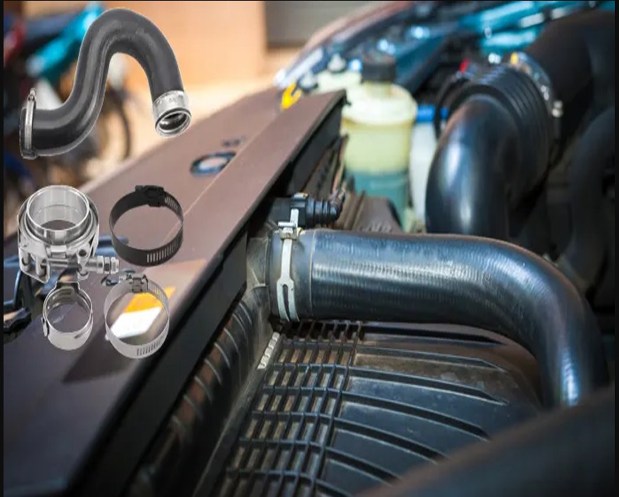- Phone:+86-17331948172 +86-0319-8862898
- E-mail: inquiry@puxingclamp.com
Sep . 23, 2024 12:46 Back to list
Troubleshooting Issues with Hose Clamps Not Securing Properly
Troubleshooting Hose Clamps Why They Might Not Be Tightening
Hose clamps are essential components utilized in various mechanical and plumbing applications to secure hoses to fittings and prevent leaks. Despite their importance, there are instances where hose clamps fail to tighten properly, leading to potential leaks, system failures, or safety hazards. Understanding the reasons behind this issue and how to troubleshoot it can save time, prevent damage, and ensure system integrity.
Common Reasons for Hose Clamp Issues
1. Incorrect Size One of the most common reasons for a hose clamp not tightening effectively is the selection of the wrong size clamp. Hose clamps come in different sizes and are designed for specific diameter ranges. If the clamp is too large, it will not grip the hose adequately, causing a loose fit. Always ensure that the clamp you are using matches the diameter of the hose accurately.
2. Worn or Damaged Clamp Over time, hose clamps can experience wear and tear. Factors such as corrosion, exposure to harsh chemicals, or excessive use can compromise the integrity of a clamp. A damaged or worn clamp may not apply sufficient pressure to create a tight seal. Regular inspections can help identify such issues before they lead to significant problems.
3. Improper Installation The way a hose clamp is installed can significantly impact its effectiveness. If the clamp is not positioned correctly, it may not apply even pressure around the hose. Ensure that the clamp is placed evenly and is tightened in accordance with the manufacturer's specifications. A common mistake is overtightening, which can damage the hose or fitting rather than secure them together.
4. Type of Hose Material The material of the hose itself can affect how well a clamp tightens. Softer materials, such as rubber, may deform under pressure, making it difficult to achieve a secure fit. If using softer hoses, consider clamps that offer a greater surface area or are designed specifically for those materials. Additionally, using clamps with a rubber liner can help provide a more secure seal.
hose clamp not tightening

5. Fluid or Debris Infiltration Sometimes, fluid leaks can occur due to debris or contaminants that prevent a tight seal. If dirt or grime accumulates between the clamp and hose, it may create gaps that allow liquids to escape. Ensure that both the hose and fitting surfaces are clean before installing the clamp.
6. Temperature Variations Temperature changes can cause materials to expand or contract, affecting the tightness of hose clamps. For example, if a system is exposed to fluctuating temperatures, the hose may shrink or swell, impacting the effectiveness of the clamp. Regular maintenance and inspections are crucial in environments with extreme temperature variations.
Best Practices for Maintaining Hose Clamps
To ensure optimal functioning of hose clamps, consider the following best practices
- Regular Inspection Periodically check hose clamps for signs of wear, corrosion, or loosening. Catching issues early can prevent bigger problems down the line. - Correct Sizing Always use the correct size clamp for the hose. Measure the diameter of the hose accurately and select clamps that fit snugly. - Proper Installation Techniques Follow manufacturer guidelines for installation. Make sure to evenly tighten the clamp and avoid over-torquing. - Use Quality Components Invest in high-quality hose clamps made from durable materials that can withstand the conditions of your particular application.
In conclusion, while hose clamps are robust components, they must be selected and installed correctly to function properly. By understanding the common reasons that prevent hose clamps from tightening and following best practices, you can ensure reliable performance and system integrity, minimizing the risk of leaks and other complications.
-
Large Stainless Steel Adjustable American Type Hose Clamp - Hebei Pux Alloy Technology Co., Ltd|Corrosion Resistance&High Breaking Torque
NewsJul.30,2025
-
Large Stainless Steel Adjustable American Type Hose Clamp - Hebei Pux Alloy Technology Co., Ltd
NewsJul.30,2025
-
Large Stainless Steel Adjustable American Type Hose Clamp - Hebei Pux Alloy Technology Co., Ltd|Corrosion Resistance&Industrial Applications
NewsJul.30,2025
-
Large Stainless Steel Adjustable American Type Hose Clamp-Hebei Pux Alloy Technology Co., Ltd|Corrosion Resistance, Adjustable Design
NewsJul.30,2025
-
Large Stainless Steel Adjustable American Type Hose Clamp - Hebei Pux Alloy Technology Co., Ltd. | High Breaking Torque & Corrosion Resistance
NewsJul.30,2025
-
Large Stainless Steel Adjustable American Type Hose Clamp - Hebei Pux Alloy Technology Co., Ltd
NewsJul.30,2025




